This article was produced for ProPublica’s Local Reporting Network in partnership with the Sun Herald. Sign up for Dispatches to get stories like this one as soon as they are published.
By 2015, it was clear that Mississippi oysters were in crisis. It was a devastating development for the state: As late as 2009, the oyster industry had contributed an estimated $24 million in sales to the state’s economy, and it sustained 562 full- and part-time jobs.
Then-Gov. Phil Bryant convened an oyster council to come up with solutions.
“This is the soybean of the sea,” Bryant said at a community gathering in 2015 at which he unveiled the council’s report. “We’re going to make sure everyone enjoys it.” The council set a goal of producing 1 million sacks of oysters a year by 2025.
But almost a decade later, that goal is nowhere in sight: In a region that helped pioneer the oyster industry, only 457 sacks were harvested in 2022, none of them from the public reefs that the state had worked to restore.
A lot has gone wrong for oysters here, where the region’s blend of saltwater and freshwater has historically nurtured them. Brutal storms and federal flood-management protocols that send freshwater flowing into oyster habitats have both taken their toll, and have escalated as a result of climate change.
But new reporting from ProPublica and the Sun Herald shows that the state has also failed to stem the crisis, investing millions of dollars to rebuild reefs in ways that did not respond to changing conditions. Some of that money came from funds the state received as a result of the BP oil spill.
“They’re just wasting money,” said Keath Ladner, a former oyster fisherman whose family was in the seafood business for three generations. “And the fishermen know this.”
For decades, the state has focused on rebuilding reefs, restoring them with shell or rock to give baby oysters a place to settle and grow. Since Hurricane Katrina damaged or destroyed more than 90% of state reefs in 2005, two state agencies have spent $55 million to restore Mississippi Sound oysters, which are critical to the estuary’s health.
Mississippi maintains the majority of the state’s reefs, opening them to licensed fishermen for harvest. But reefs maintained by the state have shrunk: The state estimates that the Mississippi Sound historically had about 12,000 acres of oyster reefs, compared to 8,112 acres today. There hasn’t been a harvest on Mississippi’s public reefs since 2018. Fishermen have left the industry in droves.
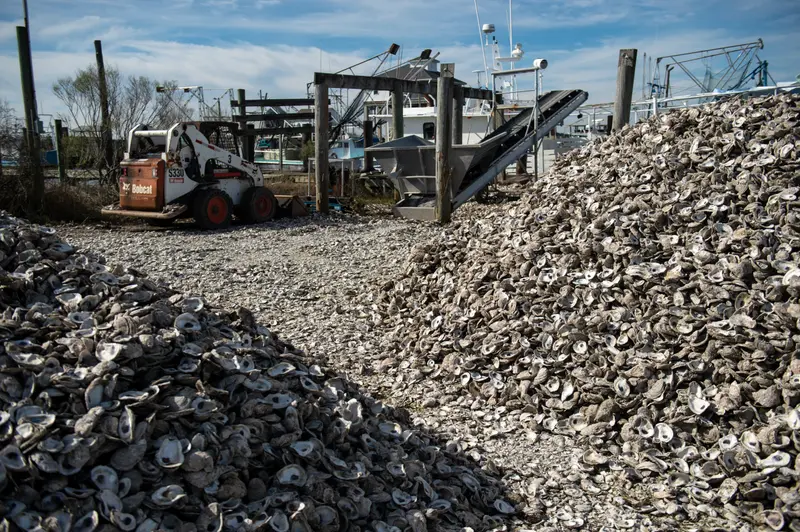
Locals in the fishing industry say the state has failed to do routine maintenance, which includes planting rocks or shells on solid ground and later turning or raking them to knock off silt so baby oysters can settle there.
Joe Spraggins, executive director of the Mississippi Department of Marine Resources, which regulates and oversees the state’s oysters, said his agency does not have enough money and personnel to maintain oyster reefs in today’s climate.
Spraggins himself acknowledged the high costs and poor outcomes. “I could probably go buy 100,000 sacks of oysters in Texas every year and give them to y’all to sell and come out cheaper,” he told oystermen at a meeting in the fall of 2021. He thinks private operators could expand oyster reefs beyond the acres that the Marine Resources Department plants with rock and tries to maintain.
That’s the conclusion of state Sen. Mike Thompson, an attorney who piloted offshore boats when he was younger. In his opinion, it’s time to give “the fishermen who know and understand the fishery the opportunity to restore the reefs.” He recently introduced legislation that would expand private leasing of oyster grounds.
The sense of urgency about saving the oysters stems from more than falling seafood sales. Oyster reefs are critical for the health of the Mississippi Sound and other estuaries. They serve as nurseries, refuge and foraging grounds for many aquatic animals, including fish, shrimp and crabs. They protect the shoreline from erosion in storms. And oysters filter and clean the water as they feed, with one oyster capable of filtering up to 50 gallons a day.
“That is a keystone species for any estuary, and that’s exactly what we have here in the Mississippi Sound,” said Erik Broussard, deputy director of marine fisheries for the Marine Resources Department. “So it’s extremely important for everything that inhabits the Mississippi Sound to have a healthy shellfish population.”
A global analysis published in 2009 concluded that “oyster reefs are one of, and likely the most, imperiled marine habitat on earth. The oyster fisheries of the Gulf of Mexico need to be managed for what they represent: likely the last opportunity in the world to achieve both large-scale reef conservation and sustainable fisheries.”
But signs of recovery are hard to find in this Gulf of Mexico estuary. On a sunny day in October aboard a fishing boat called the Salty Boy, coastal science professor Eric Powell and crew scoured the bottom of the western Mississippi Sound for oysters.
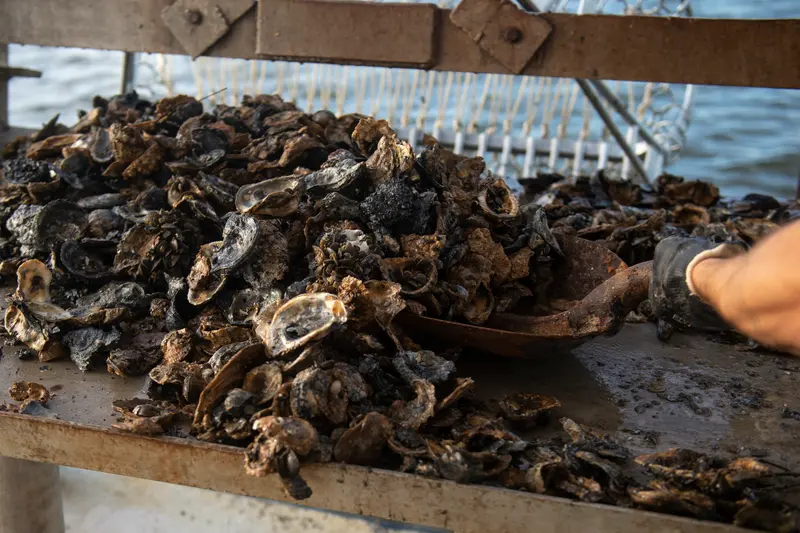

Over six hours, they found only five live adult oysters large enough to be harvested. Powell was encouraged to see more young oysters growing on the reefs, but said the population is still “well short” of recovery.
Years of Decline
The Jenkins family ran a seafood business on the Chesapeake Bay in Virginia until disease ravaged the oyster beds there.
By the 1990s, they were buying their oysters from Mississippi, which had been a major seafood producer since the early 20th century: Oyster shells paved the beach highway and seafood factories once lined the shores in Biloxi, where casinos dominate the commercial waterfront today.
So the Jenkins family followed the oysters to Pass Christian, on the western side of the Mississippi Sound, a Gulf of Mexico estuary where saltwater from the Gulf mixes with freshwater from rivers and other sources. The family found a fleet of around 100 oyster boats docked in the harbor to supply their new company, Crystal Seas Seafood. Business was good.
“My dad worked there all day long during oyster season, helping unload the boats for us and load the trucks for us and some of our customers,” Jennifer Jenkins said.

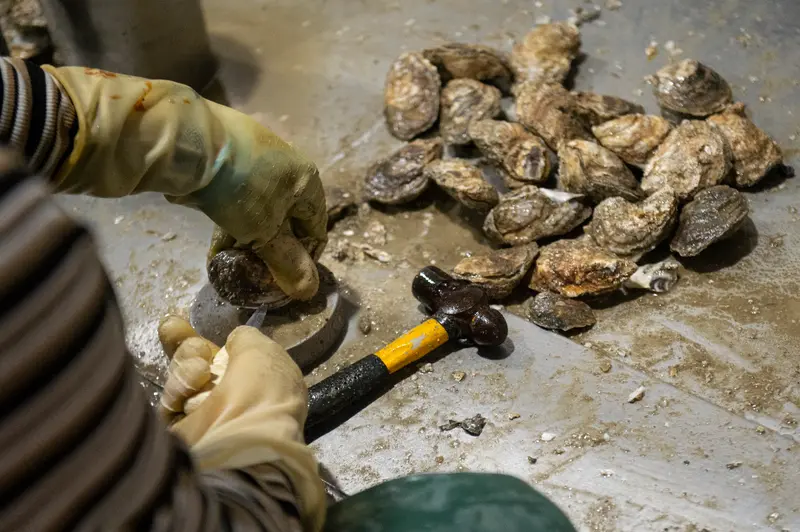

Today, however, most of the oyster boats in Pass Christian’s harbor have been sold or re-fitted for crabbing or shrimping. In 2004, the state had 13 companies licensed to process oysters. By 2022, there were only three, state records show.
“Oysters, it’s shot,” said Roscoe Liebig, a former oyster fisherman who runs a live bait shop from a steel barge in Pass Christian’s harbor. “They’re finding a few here and a few there, but it’s mainly just petrified shells.”
The region’s reefs have taken dramatic hits in the last two decades, triggering mass oyster deaths. The first blow was Hurricane Katrina, the August 2005 storm that scoured reefs and buried oysters in mud. The Marine Resources Department estimated that 90% of reefs were damaged or destroyed.
The storm also devastated local infrastructure. Keath Ladner’s grandfather had opened a seafood market in the region in 1942, serving the picturesque city of Bay St. Louis, which drew tourists and New Orleans residents who built second homes along the shorelines.
The business eventually expanded to Bayou Caddy in Hancock County, which borders Louisiana. There, Ladner’s father operated a seafood and ice business with docks where the family bought and sold oysters and shrimp. Ladner and his brother followed his father into the business, expanding with a marina.
Ladner said his family lost $8 million in buildings and equipment to Katrina. The story of loss was common along the 70 miles of Mississippi coastline pummeled by the hurricane’s storm surge, which reached up to 28 feet.
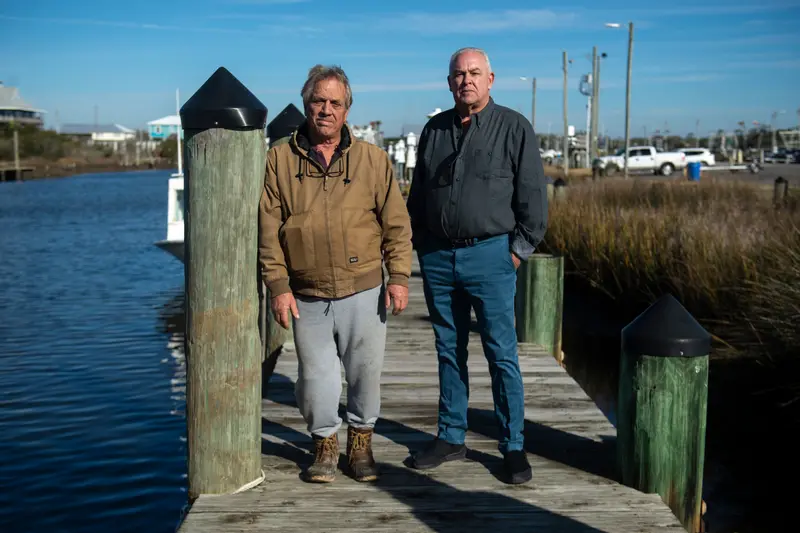
The oyster population suffered again five years later, when oil gushed from a BP well in the Gulf for 87 days, fouling 1,300 miles of coastline from Texas to Florida and killing sea turtles, dolphins and birds.
As damage from the oil spill was still being assessed, the Army Corps of Engineers opened the Bonnet Carré Spillway in May 2011 for 42 days to prevent Mississippi River flooding. The spillway empties river water into Lake Pontchartrain, in Louisiana, which flows into the Mississippi Sound. Opening that waterway follows federal protocols for preventing flooding in the region, but doing so can reduce salinity in nearby waterways to levels at which oysters are unable to survive. The 2011 opening killed 85% of oysters in the Mississippi Sound.
The struggling oyster population took another hit in 2016, when many were killed by low oxygen levels. The hypoxia event is unexplained, but not uncommon in the Sound, said Powell, the coastal scientist.
But as disasters go, it was the huge quantity of freshwater released by the Bonnet Carré Spillway in 2019 that topped them all. The spillway was opened twice, for a record-high total of 123 days, because of severe Mississippi River flooding caused by heavy rainfall. The river water killed almost all the oysters in the western Sound and, for the first time in memory, Spraggins of Marine Resources said, killed oysters all the way to Pascagoula, more than 100 nautical miles away, near the Alabama state line.
As climate change ushers in more intense rainfall, one 2020 paper from University of Mississippi scientists suggested that the continued reliance on this method of preventing floods could render oyster harvesting unsustainable in the western Sound.
“If the decision is, ‘We’re going to depend totally on that one spillway, which means that periodically Mississippi Sound is going to become a freshwater lake,’ then let’s not worry about spending a lot of money trying to restore oyster reefs because you’re just pouring money down a rathole,” Powell said.
Failed Interventions
Oysters reproduce by releasing sperm and eggs into the water during spawning season, which in the Mississippi Sound occurs between May and October. These larvae float freely for two to three weeks before cementing for life to a hard surface.
But as reefs disappear, hard surfaces can be difficult to find. So as the disasters in the Sound escalated, Mississippi poured millions of dollars into physically rebuilding the reefs that oysters need to grow.
Since 2005, Mississippi’s Department of Marine Resources has spent $35.6 million on oyster restoration. And after a federal settlement with BP over its oil spill sent money for economic development and environmental restoration to the region, the state’s Department of Environmental Quality has spent another $19.8 million on the effort.
One $10 million project that the Environmental Quality and Marine Resources departments carried out a decade ago involved spraying limestone mixed with a small quantity of oyster shell from a barge onto 12 western Sound reefs covering 1,430 acres.
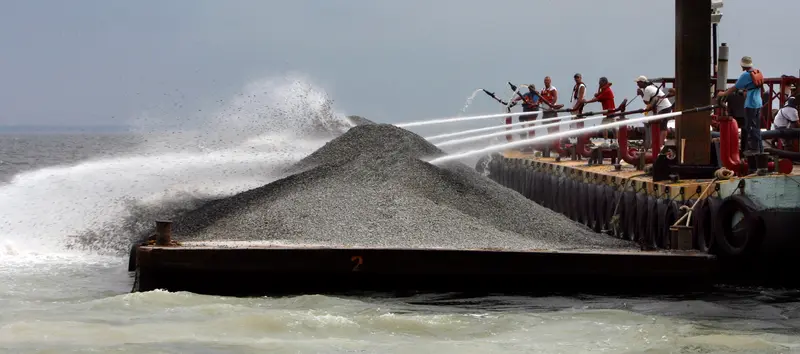
The majority of the material was sprayed in spring 2013. A 2016 monitoring report filed by Marine Resources found that on five of those reefs, between 30% and 90% of the material sprayed sank into the mud, where oysters are unable to grow.
A final report filed on the project in July 2021 tells the story: zero adult oysters found in samples from the 12 sites sprayed.
“It’s very unfortunate that our goal was not met,” the report concludes. “Natural Disasters and events beyond our control led to the failure of accomplishing our goal.”
The report attributes the project’s failure to a range of causes including hypoxia, the 2019 Bonnet Carré openings, tropical storms and commercial harvesting that the governing board of Marine Resources allowed on the newly restored reefs.
By January 2021, the Marine Resources Department publicly conceded the “uncertainty” of investing in western Sound oyster restoration because of more frequent Bonnet Carré openings. Marine Resources managers said they had started shifting efforts to the east, where water bottoms suitable for oysters are far more limited, by 2016.
The Environmental Quality agency has had a reef project in the central Sound since 2016. Since it started, the project has struggled with materials, cost and timing. Final results are still pending, but monitoring shows more reef loss than gain in the areas planted. Most of the sites tested so far show live oysters, although they were present in significant numbers on only half the subplots planted with limestone. Marine Resources says the project was intended to test reef material, not grow large amounts of oysters.
Environmental Quality spent almost $2.5 million deploying the limestone. The overall project, which includes mapping, monitoring and other components, is expected to cost $11.7 million.
“The point of this project was to see if this technique would be helpful across the program,” said Valerie Alley, program management division chief of Environmental Quality’s Office of Restoration. “So anything it tells us is good. It’s either we do it this way or we need to find another way, right?”
Another BP-funded oyster project in the eastern Sound was awarded $4.1 million in 2019. Located off the shores of Pascagoula, a city known for building military ships, it will not proceed as originally planned.
Environmental Quality had planned to move oysters from a Pascagoula reef where water is polluted to an area where they could purge themselves and be safe for consumption.
But Environmental Quality Executive Director Chris Wells said that too few oysters were found on the reef for relocation. Instead, the agency hopes to use most of the funding to build up the reef, which would be good for the oysters and for the environment. “If we can replenish that oyster reef, or any oyster reefs over there, you get oysters in the water and they start filtering and that improves water quality,” Wells said.
Should Reefs Be Privatized?
Aaron Tillman used to love fishing for oysters off the shores of Pass Christian. The reefs are close enough to shore that he could catch his limit for the day and be home for dinner.
The 48-year-old is a third-generation fisherman; his nine brothers and stepbrothers were also fishermen, but he’s the only one left in the business.
It hasn’t been easy, and today, he’s running out of the Pass Christian harbor and fishing for oysters. Just not in Mississippi.
Instead, Tillman is fishing private leases that Crystal Seas Seafood maintains in Louisiana, where oyster grounds have been leased to individuals and businesses since the 1800s.
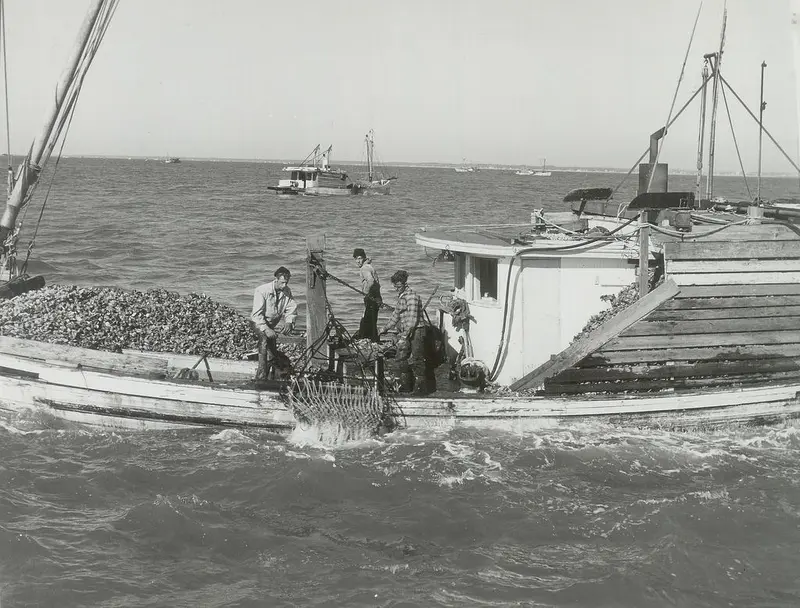
One reef is only 10 miles over the Mississippi-Louisiana state line, and was damaged by freshwater flooding in 2019, but the private lease grounds in Louisiana are producing oysters, while the public grounds he fished in Mississippi are closed because there are too few adult oysters to harvest.
After the die-off caused by the 2019 Bonnet Carré openings, Jenkins said Crystal Seas sprayed clean, dry oyster shell from its processing plant and turned over old oyster shell on its Louisiana reefs so oysters would grow again.
“The oysters in Louisiana are growing real good,” Tillman said after a recent three-day trip. “Plenty of oysters growing all over.”
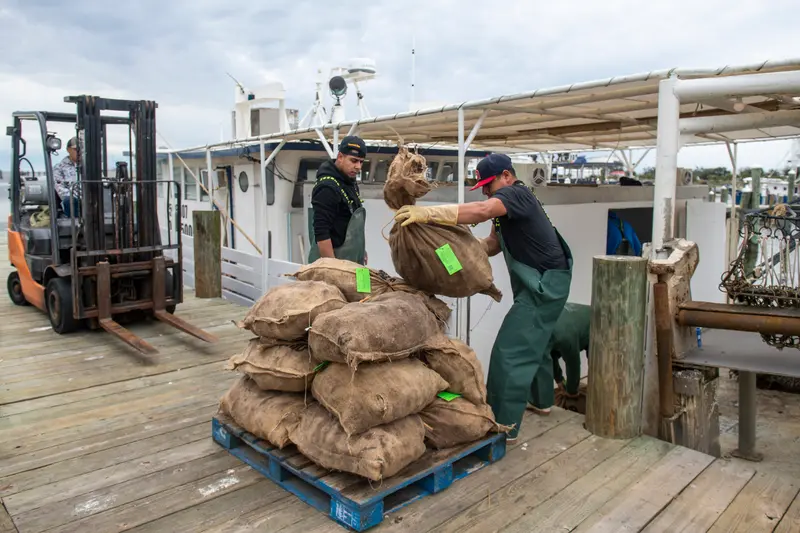
There are a lot of differences between the two states: Louisiana has much more water and more harvestable reefs than Mississippi does, and the water flows in different ways, so the impacts of natural and manmade disasters are not the same in both states.
But even accounting for those differences, officials who work on oyster projects in both states said Louisiana’s reefs are healthier in part because of who manages them: Fishermen hold leases on about 400,000 acres of Louisiana water bottoms, while the state maintains 38,000 acres of reefs. The state concedes that the private lease grounds are in far better shape than the state-maintained grounds.
In Louisiana, 99% of the oyster harvest came from private leases in 2021, said Carolina Bourque, oyster program manager for the state Department of Wildlife and Fisheries. In Mississippi, by contrast, records show no harvest of significance on leased reefs since 2016; that year, the catch on privately leased reefs was less than 1% of the total.
The spillway openings did damage in Louisiana, Bourque said. But even though the freshwater damaged some private leases, she said “they were fast coming back.” She said this was possible because private fishermen were able to replace material on the reefs right away.
Mississippi has been slow to expand private leasing, one of many recommendations that were made in the June 2015 Governor’s Oyster Council report. The state Legislature in 2015 expanded lease terms from one to five years and is currently working on a bill to open more areas for private leasing. Marine Resources administrators say they work with private leaseholders in Mississippi, but only a few are active.
One of the upsides of private leasing is that companies are highly motivated to keep their acres in good shape.
“When it’s your money on the line,” Jenkins, the manager of Crystal Seas, said, “you learn fast.”
In Louisiana, Bourque said leaseholders were able to replant quickly after the 2019 Bonnet Carré openings, while states can wait several years for federal disaster funding and depend on Mother Nature to replenish reefs.
Jenkins thinks oysters can still be grown in the western Sound with the right management techniques.
“They’re growing them in Louisiana 3 miles away,” she said, “so there’s no big wall out there that doesn’t allow it to happen here.”











